Hands-free TV control is one of the defining smart home features of modern Alexa-compatible televisions. In 2025, homeowners are embracing the convenience of voice-operated entertainment, where remotes are optional and spoken commands take over.
But what makes hands-free control actually work? And which TVs perform best without a remote?
In this guide, we’ll explain how hands-free TV control works, what tech is required, which TVs have the best performance, and which Alexa commands offer the most value.
What Does Hands-Free TV Mean?
Hands-free TV control means being able to operate your television using voice commands without having to press a button on a remote or device. This is made possible by:
Built-in far-field microphones
Native Alexa or Alexa compatibility
Voice wake word detection (“Alexa”)
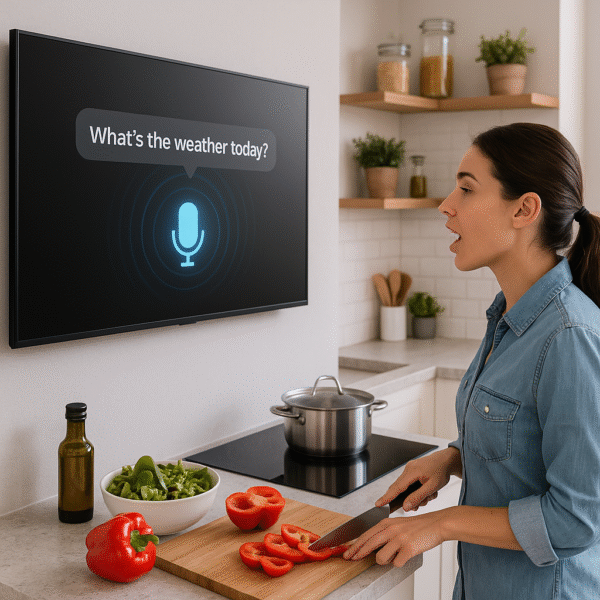
Which TVs Support Hands-Free Alexa in 2025?
Here are the best TVs offering true hands-free Alexa:
| TV Model | Built-In Mic | Always Listening | Alexa Wake Word | Far-Field Voice Pickup |
|---|---|---|---|---|
| Fire TV Omni QLED | ✅ | ✅ | Yes | Excellent |
| LG OLED C3 | ✅ | ✅ | Yes | Good |
| Samsung QN90C | ❌ (remote only) | ❌ | No | Limited |
While some Samsung TVs are Alexa-compatible, they typically require pushing a mic button on the remote.
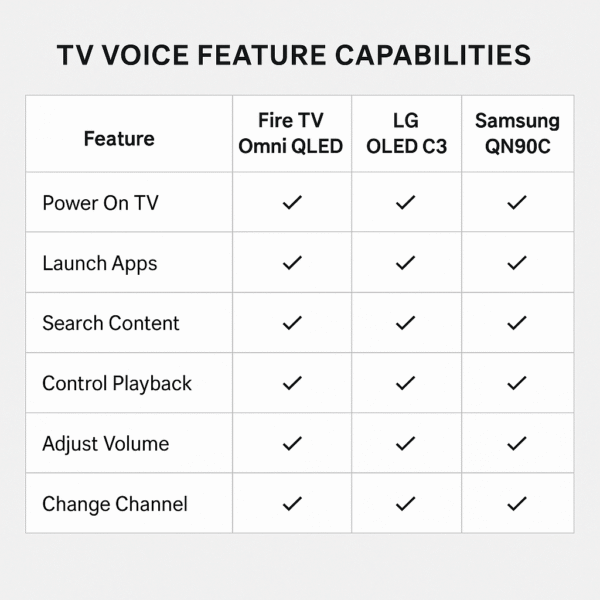
How Good is the Microphone Pickup?
Far-field microphones are critical for effective hands-free control. These mics are built into the bezel or chassis of the TV and are designed to:
Pick up voice from across the room
Filter out TV audio to avoid self-interference
Recognize wake words accurately
Tips for Best Mic Performance:
Avoid placing the TV near vents or fans
Don’t block the mic with soundbars or decor
Speak clearly and naturally
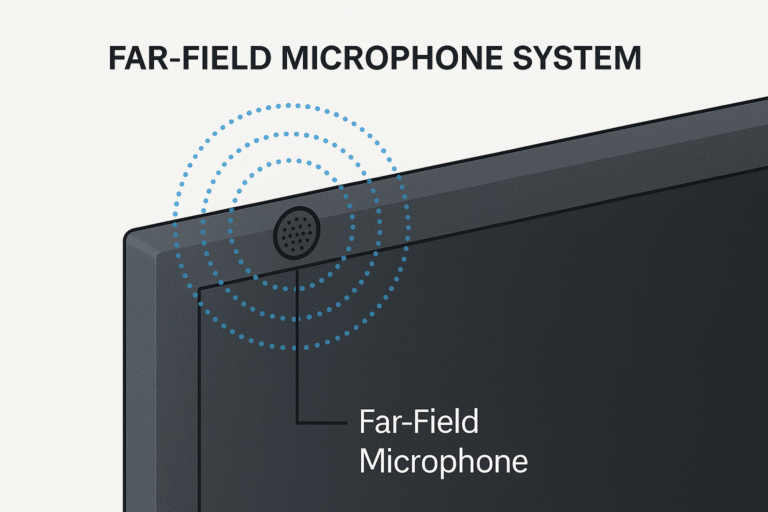
Useful Alexa Commands for TV Control
Here are practical voice commands that replace remote functions:
Power & Volume
“Alexa, turn on the TV”
“Alexa, mute the TV”
Streaming & Apps
“Alexa, open Netflix”
“Alexa, play The Grand Tour on Prime Video”
Smart Home Scenes
“Alexa, it’s movie time” (triggers TV + lighting + volume)
“Alexa, pause the TV and lock the door”
Navigation
“Alexa, go home”
“Alexa, scroll right”
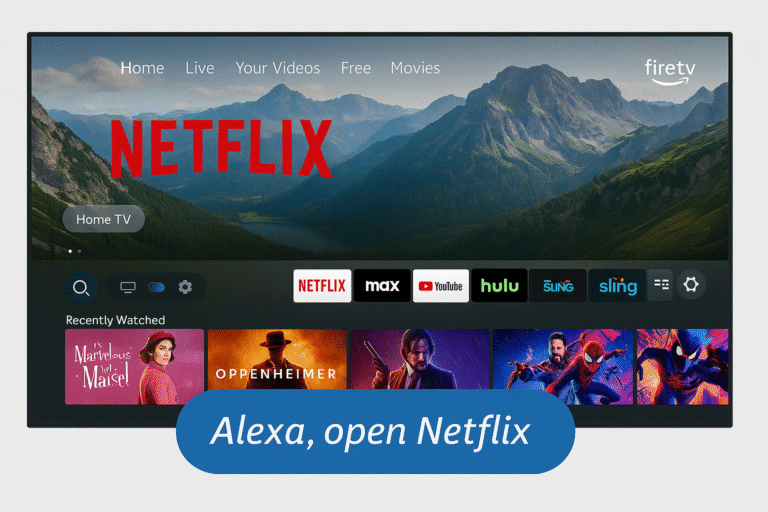
Limitations of Hands-Free TVs
While hands-free is powerful, there are still limitations:
Cannot navigate deep menus without remote
Voice commands may lag depending on Wi-Fi
Background noise may reduce recognition accuracy
Privacy concerns if mic is always on
🔐 Privacy Tip: Use TVs with a hardware mute switch or enable “press-to-talk” mode if concerned.
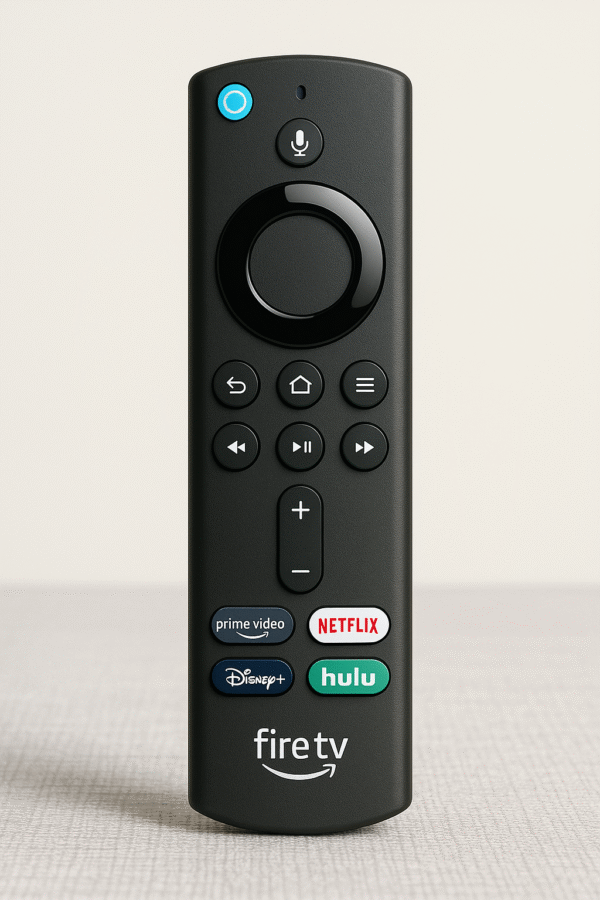
Hands-Free TV Setup Tips
To get started:
Enable Alexa in your TV’s settings (e.g., Fire TV > Settings > Alexa)
Connect your Amazon account
Run voice calibration (if supported)
Practice wake word detection and test with basic commands
📝 Pro Tip: Position your TV where it has open air to hear you clearly — avoid enclosed spaces or deep shelving.

Final Takeaway: Who Should Use Hands-Free TVs?
Hands-free TV control is great for:
Families managing routines with kids
Elderly users who struggle with remotes
Busy users cooking, cleaning, or multitasking
Accessibility needs
If you pair your TV with other smart home devices like lights, thermostats, or door locks, voice becomes a hub of home automation — all hands-free.
